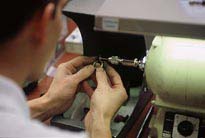Sketch
The story of a piece of jewelry always begins with a sketch. This is the first stage, when the imagination takes shape on paper. An idea, a desire, a simple sketch that is asking only to become a jewel.
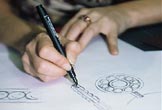
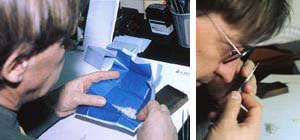
Stone Selection
Selecting stones requires the eye and expertise of a specialist: a diamantaire (for diamonds) or a lapidary (for all other precious or decorative stones). The selection of a stone is subject to various criteria: its clarity, structure (which will dictate its cut), depth and sparkle of its color.
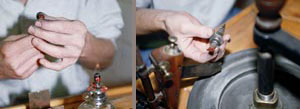
Stone Cutting
This is a delicate process that must bring out all the stone’s beauty. In order to shape a stone, the cutter must first examine it with a magnifying glass so as to discover the secrets of its structure, and then enhance its fires and make its colors vibrate.
Wax
Wax is used to make a three-dimensional model of the jewel. The creator can then completely control the volume and make adjustments to a curve, line or shape of a ring. The wax is the model that will be referred to during the creation process.
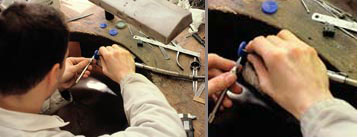
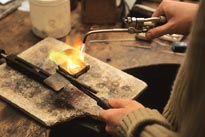
casting
A casting is done from the wax model of the jewel. It makes it possible to pour the metal into a mold and potentially produce a jewel in limited edition. When it is removed from the casting, the jewel must be “cleaned” in order to eliminate all traces of the process.
Rolling Mill
A rolling mill can stretch metal to any length. Thus thick gold plate can become a foil that is as precious as it is light. A rolling mill can also be used to make metal threads of any diameter desired.
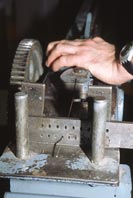
Cutting
Cutting a jewel involves different techniques depending on the desired result: striking forms the jewel’s shape; carving “sculpts” the metal in order to create fine details.
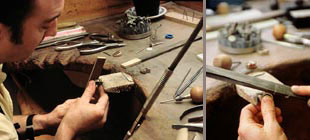
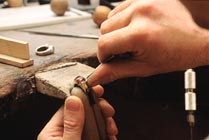
Setting
Setting consists of attaching the stones on the jewel. Setting requires a specific expertise. There are different types of settings: from the bezel setting that encircles the stone to the prong setting, and from the pavé setting to the channel setting.
Polishing
A crucial step, polishing is the last stage in finishing the jewel. It is the touch of sparkle that magnifies the metal’s color. The jewel may have a “bright polish,” meaning that the metal is perfectly smooth and shiny, or it may be brushed or satiny; there are finishings that give it a more muted texture, even a completely silky one, and that modify the color of the metal.
